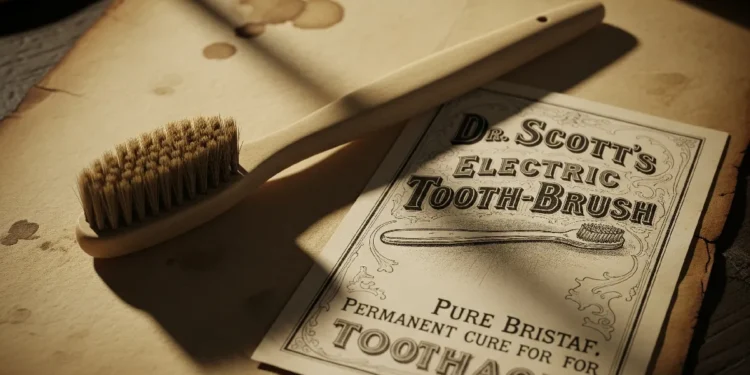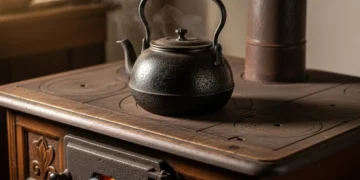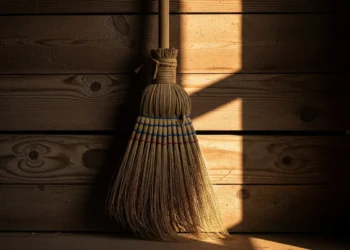Examines the history of the toothbrush from chew sticks to electric brushes — and how toothbrush use reflects public health campaigns, class standards, and cultural norms about purity.
Table of Contents
Introduction
The history of the toothbrush is not a story about clean teeth; it is a story about control. The simple object sitting on your bathroom counter is a powerful cultural artifact, an instrument quietly shaped by centuries of social anxiety, commercial ambition, and political will. We see it as a tool for health, but its past reveals a more complex narrative. From ancient chew sticks tied to religious purity to the nylon bristles that became a symbol of modern citizenship, this mundane tool has been a constant, quiet participant in defining who is considered clean, civilized, and correct. Rethinking the history of the toothbrush means exposing the unseen forces embedded in our most private daily rituals.
This article peels back the layers of this deceptively simple object to reveal how it became a central figure in public health campaigns, a marker of social class, and a tool for promoting specific cultural norms. The widespread adoption of the toothbrush was not a simple evolution of a good idea; it was a manufactured necessity, driven by industrial ingenuity, wartime propaganda, and the carefully crafted anxieties of consumer culture. We have been taught to believe that the act of brushing is a personal choice for our well-being, but its history is far more public and prescriptive than we imagine.
To understand this, we will trace the journey of this tool from its earliest origins in ancient civilizations to its commercialization during the Industrial Revolution. We will investigate how the toothbrush was weaponized in public health crusades, becoming a symbol of patriotic duty, before critically examining its flawed history as an instrument of social control and cultural homogenization. Finally, we will look forward, exploring how today’s smart technology and sustainability movements are shaping the next chapter. This is the complete history of the toothbrush—an object that cleans our teeth, but also reveals who we are.
Before the Bristles: The Ancient Origins of Dental Care
The quest for a clean mouth did not begin with plastic and nylon; it is a story far older than the object we know today. Long before the first mass-produced toothbrush, ancient civilizations developed sophisticated methods for oral hygiene. The formal history of the toothbrush often overlooks these early chapters, but evidence from as far back as 3500 BCE shows that Babylonians and Egyptians used “chew sticks.” These were small twigs, often from aromatic trees, with one end frayed to create a primitive brush and the other sharpened for use as a pick. This simple tool was not merely functional but was a foundational element in the long evolution of dental care.
This ancient tradition is most clearly seen in the continued use of the miswak, a teeth-cleaning twig made from the Salvadora persica tree. For centuries, it has been central to Islamic cultures, recommended in religious texts for its purifying properties. The miswak represents a seamless blend of the practical and the spiritual, where oral hygiene is intertwined with ritual purity. Its enduring popularity serves as a powerful reminder that the history of the toothbrush is not a linear progression toward a single Western model, but a diverse tapestry of cultural practices, many of which prioritize natural and sustainable methods over commercial products.
In contrast, European dental practices before the 18th century were often crude and inconsistent, highlighting an early and distinct class divide. While the wealthy might rub their teeth with a cloth dipped in salt or soot, the vast majority of people had no established dental care routine. This disparity laid the groundwork for the toothbrush’s later role as a social signifier. The absence of a universal tool meant that dental health was a luxury, a visible marker of status long before the toothbrush became an instrument of public health campaigns. This early period is a critical part of rethinking the history of the toothbrush, revealing that access to a clean smile has always been connected to social standing.
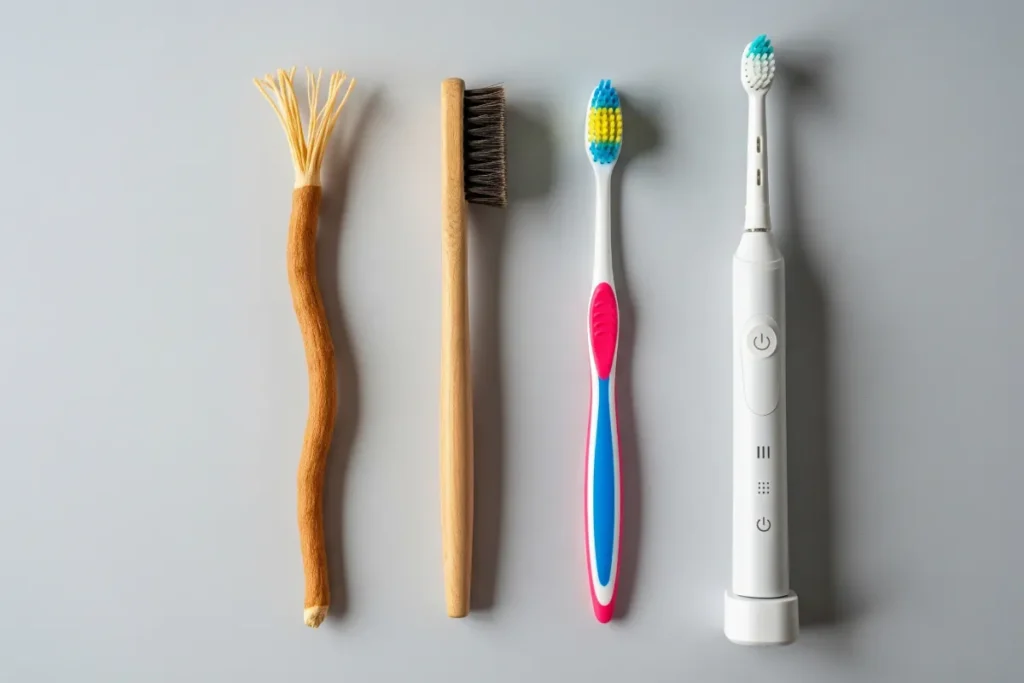
The Invention That Shaped the Modern Mouth: Commercializing the Toothbrush
The transition from disparate folk remedies to a standardized tool began in a rather unlikely place: an English prison. Around 1780, William Addis, while incarcerated, grew dissatisfied with the prevailing method of rubbing teeth with a rag and soot. He ingeniously saved a bone from a meal, drilled small holes into it, and threaded it with boar bristles. This simple act marked the genesis of the first mass-produced toothbrush. Upon his release, Addis founded a company that would manufacture his creation, initiating the first real stages of toothbrush commercialization. This pivotal moment shifted the history of the toothbrush from one of ancient tradition to modern industry.
The Industrial Revolution dramatically accelerated this change. Production scaled up, but the materials remained largely the same for over a century—animal bone and boar hair, which were not ideal as they retained bacteria and dried slowly. The true technological leap came in 1938 when DuPont unveiled nylon bristles. This invention was a watershed moment in the evolution of dental hygiene. Nylon was more hygienic, durable, and cheaper to produce, making the toothbrush accessible to a much broader market. Paired with newly developed celluloid handles, the modern toothbrush was born, ready for mass consumption and poised to become a household staple.
With the means of mass production secured, the focus shifted to creating mass demand. Early twentieth-century advertising played a crucial role in the toothbrush’s commercial success, moving beyond the product’s function to sell an aspirational idea. Advertisements began to link a clean mouth directly with social acceptance, professional success, and romantic desirability. This marketing pivot was instrumental in the history of the toothbrush, framing it not merely as a tool for health but as an essential accessory for a successful modern life. Oral care was now inextricably linked to personal image, a connection that would only deepen over the coming decades.
A Public Health Crusade: The Toothbrush Goes to War
The history of the toothbrush took a dramatic turn in the first half of the twentieth century, as dental health was unexpectedly reframed as a matter of national security. When the United States entered both World Wars, military recruiters were shocked by the widespread poor dental health among young soldiers, a condition that rendered many unfit for service. A soldier with a toothache was a liability on the battlefield. This revelation transformed oral hygiene from a personal concern into a strategic issue. The toothbrush was no longer just a consumer good; it was about to become a weapon in a new kind of war—a war on dental decay.
In response, an unprecedented alliance formed between government agencies and corporations. The American Dental Association, alongside companies like Colgate and Pepsodent, partnered with the state to launch massive public health campaigns aimed at instilling daily brushing habits. This effort heavily targeted children, with educational programs and free samples distributed in schools across the country. The message was clear and pervasive: a healthy citizen is a strong citizen. This chapter in the history of the toothbrush demonstrates a powerful fusion of corporate interest and public policy, forever changing the cultural landscape of oral care in America.
Through these concerted efforts, the act of brushing one’s teeth was elevated to a civic duty. Advertising and public service announcements framed toothbrush use as a hallmark of modern, responsible citizenship and a patriotic contribution to the nation’s strength. This period firmly embedded the toothbrush into the daily lives of millions, not just as a tool for health, but as a symbol of conformity to a new national standard of hygiene. The consequences of the history of the toothbrush are clear: a simple personal habit was successfully transformed into a public, moral obligation.
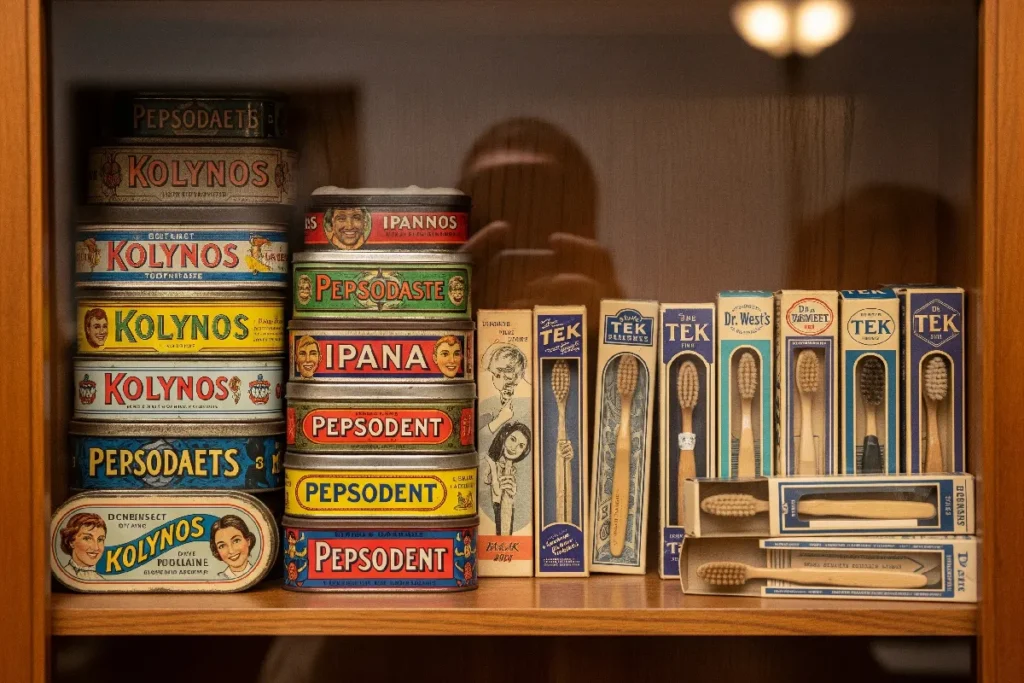
The Flawed History of the Toothbrush: An Instrument of Social Control
As the toothbrush became a household staple, its role evolved beyond mere hygiene. This flawed history of the toothbrush is deeply entwined with the construction of social hierarchies. In the 20th century, particularly in America and Europe, a clean, white smile was aggressively marketed as a signifier of more than just health—it was a marker of class, discipline, and moral uprightness. Public health initiatives, while beneficial, subtly reinforced the idea that certain bodies were more “civilized” than others. The toothbrush became an instrument of social expectation, and failure to use one could imply laziness or a lack of moral character, neatly aligning personal habits with societal judgment.
The consequences of the history of the toothbrush extended globally, often hand-in-hand with colonialism and Western cultural expansion. As Western corporations sought new markets, their standards of dental hygiene were presented as universally superior, frequently dismissing or erasing indigenous practices that had been effective for centuries. The promotion of the plastic toothbrush and fluoride toothpaste in developing nations often frames traditional tools like the chew stick as primitive or unhygienic. This cultural imposition represents a significant, yet often ignored, aspect of the toothbrush’s journey, transforming it into a quiet tool of cultural homogenization.
This history culminates in the modern, consumer-driven narrative of “the perfect smile.” Today’s obsession with teeth whitening, straightening, and cosmetic dentistry is the logical endpoint of a century of marketing that has linked oral appearance to personal worth. Rethinking the history of the toothbrush requires us to deconstruct this ideal. It is a manufactured standard, born from anxieties about purity, beauty, and social conformity. The gleaming, perfectly aligned smile is not just about health; it is a powerful symbol of having successfully bought into a specific cultural and economic system, one where our bodies are constantly projected for improvement.
Brushing Forward: Technology, Sustainability, and the Future Outlook
The evolution of dental hygiene continues to accelerate, branching into fascinating and conflicting directions. The mid-20th-century introduction of the electric toothbrush marked a significant leap, transforming a manual chore into an automated process. Today, we stand at the precipice of another shift with the rise of “smart” brushes. These devices, equipped with sensors and Bluetooth connectivity, track our brushing habits, offer real-time feedback, and collect vast amounts of data. This represents the ultimate convergence of health and consumer tech, personalizing oral care to an unprecedented degree while also turning one of our most private routines into a stream of analyzable information.
At the same time, a powerful counter-narrative has emerged, challenging the environmental consequences of this progress. The very success of the mass-produced toothbrush has created a staggering environmental crisis, with billions of plastic brushes ending up in landfills and oceans each year. This has fueled a growing movement toward sustainability, with consumers and innovators alike championing alternatives like bamboo, biodegradable bristles, and reusable handles. This pushback is a critical part of the modern history of the toothbrush, suggesting a future where innovation is measured not just by technological sophistication but by ecological responsibility.
Looking ahead, the future of oral care appears to be a battleground of competing values. On one side, we see a trajectory toward hyper-personalized biotech solutions—customized probiotics to balance oral microbiomes and AI-driven diagnostics. On the other hand, a call for simplicity and sustainability. The final chapter in the history of the toothbrush is yet to be written, but it will undoubtedly force us to confront new questions. As corporations gain access to our intimate health data, who truly owns our smile? This ongoing tension between technology, nature, and corporate control will define the next toothbrush revolution.
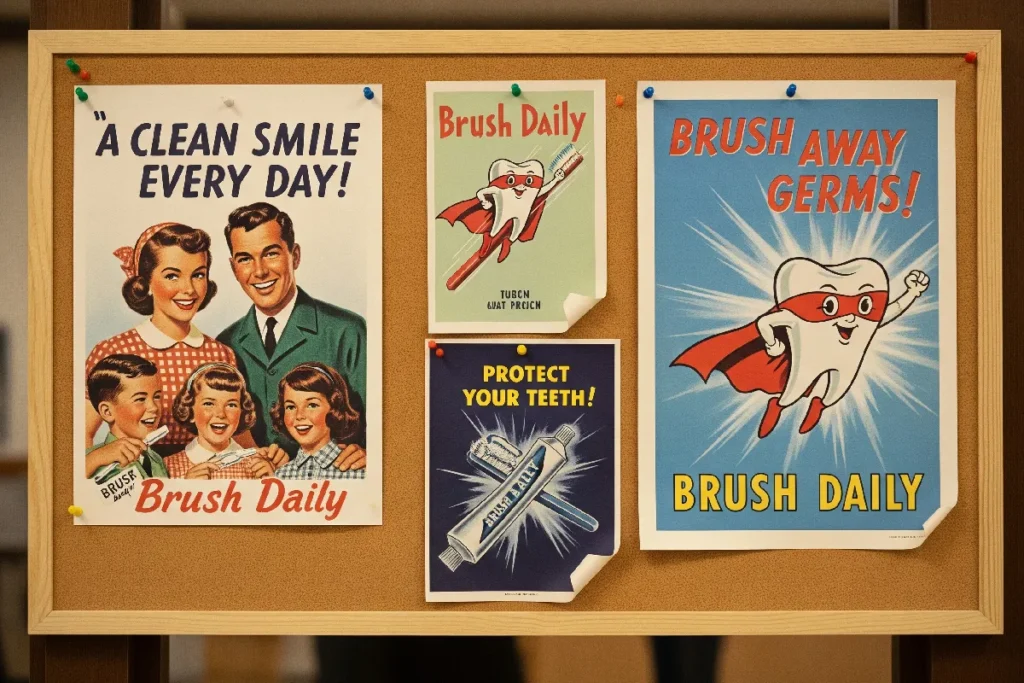
Conclusion
From a frayed twig in the ancient world to a data-collecting device in the modern one, the history of the toothbrush charts a remarkable course through human civilization. Its story is not one of simple progress, but of deliberate transformation. We have seen how the Industrial Revolution turned a niche item into a mass-produced commodity and how world wars repurposed it as a tool of national strength. Through the pervasive power of advertising and public health campaigns, this simple object was imbued with a significance far beyond its practical function, becoming an essential component of the modern identity.
The central truth, therefore, is that the toothbrush has always been an instrument of both health and profound social expectation. Its evolution was guided less by a pure desire for hygiene and more by a need to create and enforce social norms. The consequences of the history of the toothbrush are clear: a clean smile became a powerful symbol of class, morality, and cultural assimilation. This seemingly personal act of brushing our teeth was, in reality, a public performance of our adherence to a specific, and often exclusionary, set of cultural values about purity and success.
As we move into a future defined by smart technology and ecological consciousness, this critical history is more important than ever. The choice between a data-mining smart brush and a sustainable bamboo one is not just a consumer preference; it is a reflection of competing visions for our society. By understanding how the toothbrush became a tool of social control, we are better equipped to question the new norms being sold to us today. The toothbrush is a testament to how an everyday object can reflect our greatest anxieties and ambitions, and its story challenges us to see the powerful histories we hold in our own hands.
